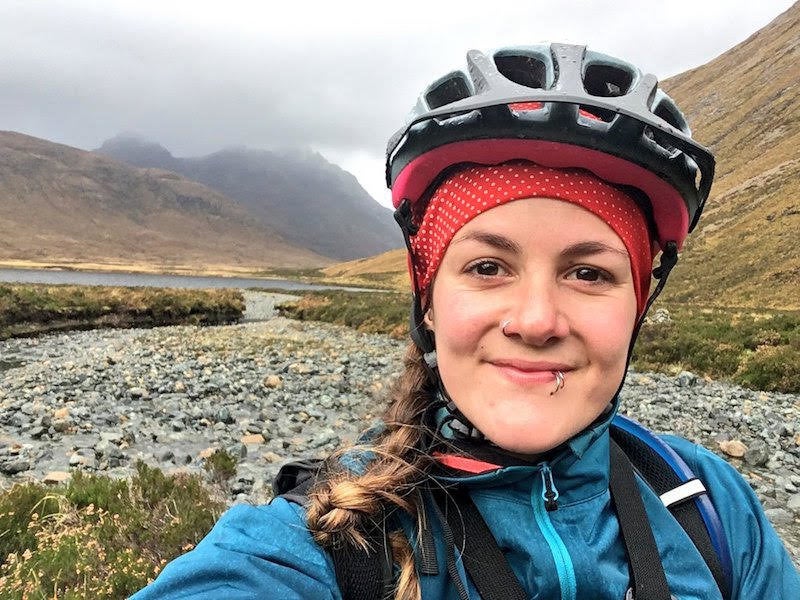You only have to look at the morning commute in a busy city or winding country lanes on a sunny weekend to see just how many more men cycle compared to women. Whether an amateur cyclist head to toe in Lycra or a hipster riding a fixie through Hackney, three times as many men cycle compared to women in the UK and they ride about four times as many miles - that’s according to Cycling UK, an organisation dedicated to making cycling more accessible for everyone.
So what’s making us put the brakes on? In 2009, Sustrans, a cycling and walking charity, found one in five (20%) women felt unsafe on their bikes, just over one sixth (17%) were worried about their age and one in twelve (8%) were concerned by their fitness level - reading those statistics, I realised I’m a textbook case.
Having started cycling again less than a year ago, the factors that put me off getting started are still fresh in my mind and - if I’m honest - I’m still dealing with some of them now. Living in London, safety on the roads was by far my biggest concern before I started, and this fear still stops me from commuting to work to this day; I was embarrassed to wear a helmet and look like a wally - because who looks good in a helmet?; finally I don’t know any other women who cycle who I could ride with. These factors put me off cycling for years.
I spoke to dozens of female cyclists about why they were put off getting on their bike in the past and there was one strikingly common theme: fear. We’re afraid. We’re worried about being judged if our abilities are not up to scratch and we’re scared of the dangers on the road.
For some of those women, fear has been something they’ve been able to overcome. Lucy Barnett, 30, from East London, now cycles to and from work every day and mountain bikes in her spare time. But, once upon a time she stopped herself joining a women’s cycling group because she was too worried she’d hold people back. Since then, she has worked on her mindset and learned to gain confidence through experience, “I realised there’s no shame in biking slowly,” she says. “I joined a London mountain bikers group, and not only are the people in the group supportive and encouraging, they do women-only rides which are brilliant for building your confidence and sharing your worries with others, who are so understanding and usually say, ‘I feel like that too’. Men don’t have the same anxiety about wearing the right kit, having a good bike or being at the back, she says, they just get out and do it.”
Lucy’s positive experience of cycling groups is no coincidence. In 2013 British Cycling launched an ambitious target to get one million more women cycling by 2020. Its Breeze programme is very much the cornerstone of this initiative, offering free female-only rides across the country (some will allow kids too). In July 2017, it revealed almost 500 clubs across the country had started to offer women-only sessions and group rides and more than 150,000 women had taken part in its Breeze rides.
One such attendee is Tess Agnew, 31, Brighton, who blogs at FitBits and is a This Girl Can Ambassador. She first took part in British Cycling’s Breeze and believes combatting women’s lack of confidence through female-only cycling initiatives is a great avenue to go down.

Women’s aversion to cycling begins at a young age. Emily Fleuriot, 39, London, who has been cycling for 13 years, says we are discouraged from being physical during girlhood. “We learn that our bodies are a precious commodity but not that it is also powerful,” she says. “Women aren’t in the habit of taking on something like cycling where there’s risk of injury, challenge of adventure or stranger danger. Those of us who do it quickly realise it was all a ploy to hold us back.” Sustrans’ research revealed a massive drop-off in girls cycling as they move onto secondary school, with one of the key concerns being how they look. There’s the idea that it is not “cool” or “feminine” to arrive at school sweaty and dishevelled.
We need to be ensuring that girls are growing up in an environment where putting on shorts, a helmet and racing down the road on the bike is a “cool” thing to do. Slowly, we are making those steps, but there is still a long way to go. Increasing the number of females willing to get on their bikes is never going to be easy, but women supporting women will help us close that gender gap.
Anyone who’s followed my journey to becoming a cyclist will know I’ve done so at my own pace, and I’d encourage you to do the same. Becoming a cyclist doesn’t mean training for a triathlon or going mountain biking, it means doing things your way. I started by taking advantage of the free cycling training session offered by my local council to learn how to cycle safely and to make sure my bike was operating, I did a test drive of my commute to work on the weekend (when it was less busy) and I also went cycling with a friend socially which reminded me sometimes it’s about the journey and not the destination. All of these things have been great for my confidence, so my advice is to overcome your fears by taking baby steps. I know I’ve still got a long way to go, but if I can do it, I’d encourage any other women to do the same.